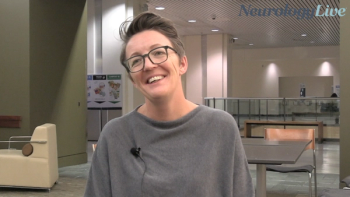
Jacqueline A. French, MD: Improving Rescue Treatment With Intranasal Diazepam
The professor of neurology at NYU Langone offered insight into the state of affairs with current seizure rescue medications and added her insight into how intranasal diazepam may improve the patient experience.
“A lot of seizure activity and a lot of anxiety can happen while you’re waiting for your rescue medication to work, and if it makes you so fatigued that you have to go lie down for the rest of the day, then whatever you gained from not having the seizure in terms of being able to go back to work or your activities—you lose that.”
At the
This analysis included data from 132 patients (6-65 years; 53.8% female; 82.6% white) and 2485 seizure episodes from the open-label, repeat dose, phase 3 study of intranasal diazepam. Over the 1-year follow-up, patients received either 5, 10, 15, or 20 mg of intranasal diazepam based on weight, with a second dose administered 4 to 12 hours later, if needed.
To find out more about the therapy, its potential to make an impact as a rescue medication, and the current state of affairs with the available rescue treatments, NeurologyLive spoke with Jacqueline A. French, MD, professor of neurology, NYU Langone Medical Center.
For more coverage of AES 2019,
REFERENCE
Miller I, Wheless JW, Hogan RE, et al. Safety and tolerability of NRL-1, an intranasal formulation of diazepam, in relationship to usage frequency in subjects with epilepsy: interim results from a phase 3, open-label, repeat dose study. Presented at: 2019 American Epilepsy Society Annual Meeting. December 6-10, 2019; Baltimore, Maryland. Abstract 1.22.
Newsletter
Keep your finger on the pulse of neurology—subscribe to NeurologyLive for expert interviews, new data, and breakthrough treatment updates.



































